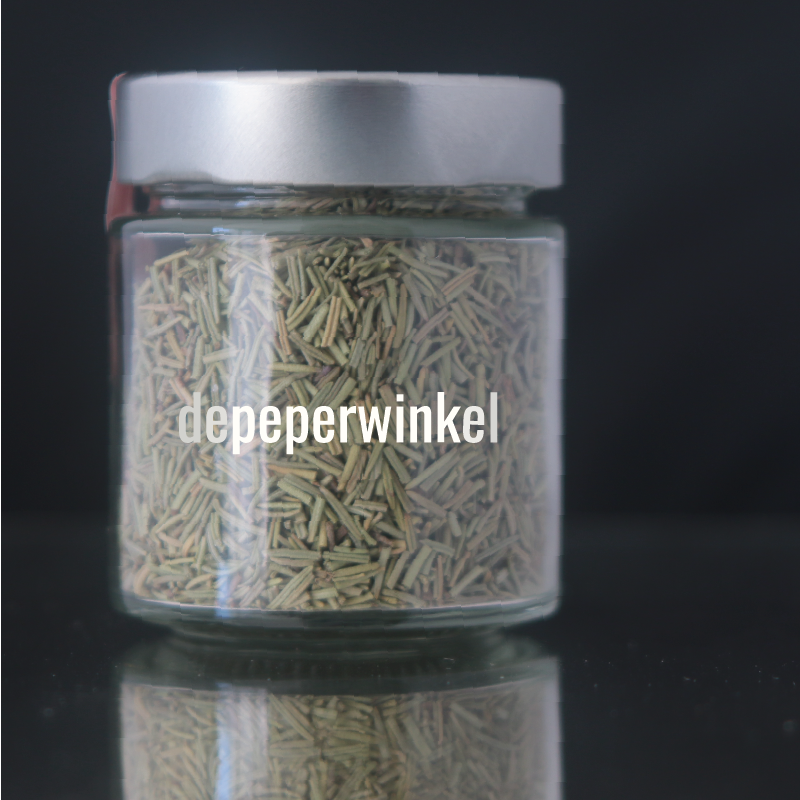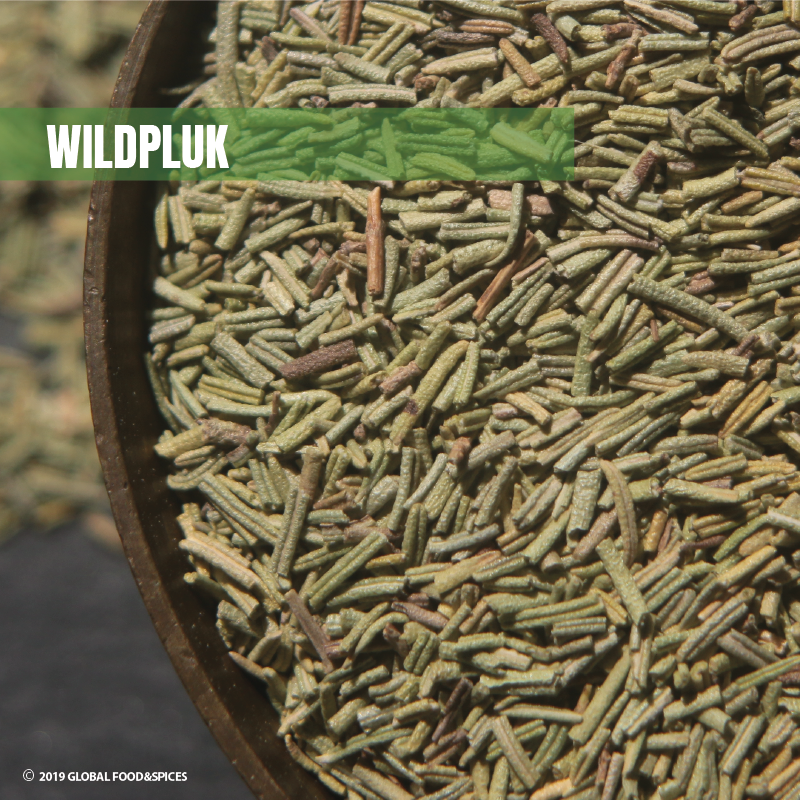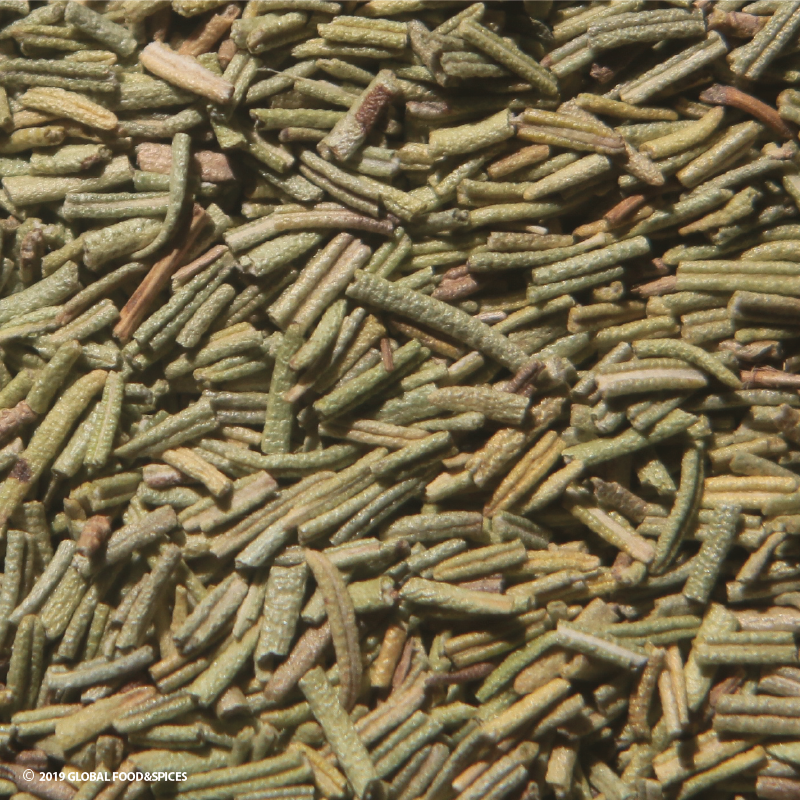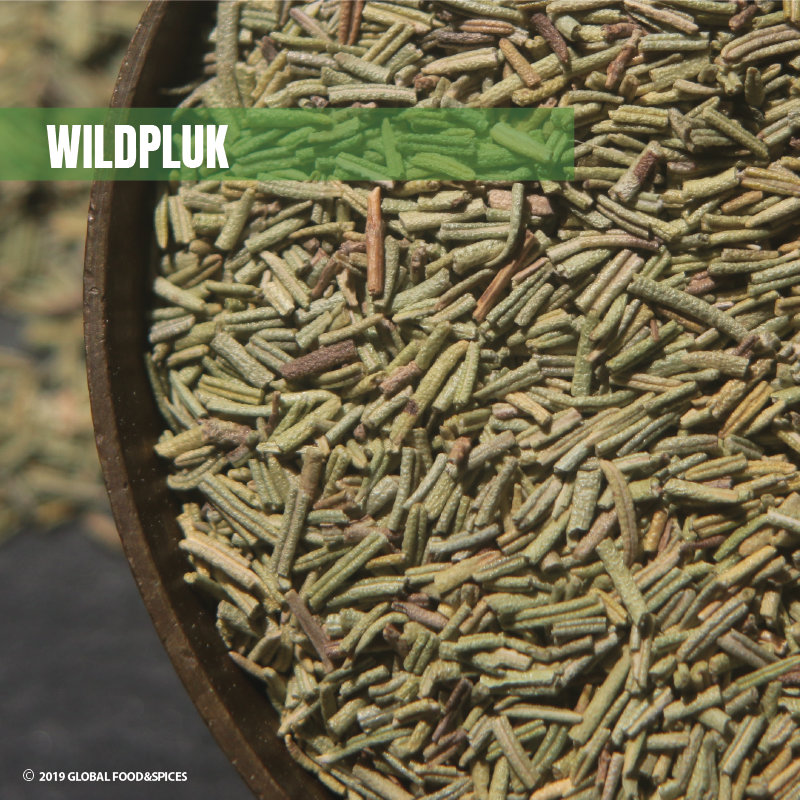depeperwinkel
Rosemary (dentrolívano)
Rosemary (dentrolívano)
In stock
Unable to load availability for pickup
Delicious! These finely chopped rosemary leaves are ready to use. They have a very pleasant, strong flavor that they prefer to hold for a long time. Give the rosemary leaves time to be absorbed into a dish, and feel free to use them in a roast!
Many gardens boast hardy rosemary with its evergreen "needles." These are curled, leathery leaves, green on top and grayish on the underside. The leaves are so sturdy that they withstand baking and grilling well. They are therefore a popular herb in baked potatoes, grilled meat, and game.
Fresh rosemary leaves are too hard and tough to eat, especially the oversized ones from the garden. Use a sharp knife to finely chop the leaves, but don't chop them, as this will release a strong bitter flavor—a defense mechanism of many plants.
Notice the fine texture of these dried leaves from the island of Crete. They come from wild plants with very fine leaves compared to garden rosemary. After harvesting, these leaves are stripped from the stems and then chopped into small pieces, making them perfectly edible. Harvesting takes place before the rosemary blooms, when the leaves are at their most flavorful.
Rosemary is a plant in the Lamiaceae family, like oregano and thyme. It is native to the Mediterranean and was already used as a herb in ancient times. It arrived in China in the third century – the Han Dynasty – and many centuries later in the Americas. Rosemary is therefore used not only in Italian and Greek cuisines, but also in Chinese and Latin American cuisines.
Like thyme, rosemary is a potent herb, especially this wild-picked variety. But unlike thyme, you don't have to worry so much about overdosing and drowning out other flavors. The reason for this is the aforementioned leathery texture of the leaves, which makes it difficult for the leaves to release their flavor—in other words, it retains the flavor.
Smell and taste
The taste and smell of rosemary are determined by α- and β-pinene (pine resin), borneol (balsamic), camphor and camphene (camphor) and limonene (citrus).
Usage
The flavor of dried rosemary is best experienced when the leaves have had time to release their aroma. In this case, the leathery leaves are a bit more susceptible to this. They handle heat well, so feel free to add them to any dish that needs to be baked or grilled.
Besides the classic uses of rosemary, which involve cooking it for a long time, you can also use it in quick preparations, even stir-fries. It's interesting to use rosemary in alternative ways, such as in reductions (a lot of heat in a short time), or as an infusion (with sugar syrup) used in fruity chutneys or savory jams. Balsamic jam, for example.
Wild rosemary combines well with oregano, thyme, basil and fennel seed.
Recipes:
Features:
- 100% dried leaf of the Rosmarinus officinalis
- wild-picked, hand-harvested (zipped)
- origin: Greece (Crete)
Assortment
- available in glass (30 grams) and stand-up pouch (no test tubes)
- larger quantities on request
Gift wrapping
- The jar is available in a tasteful gift packaging, consisting of a cube box filled with black tissue paper.
- For an overview of our gift packaging, please refer to the gift packaging section.
Save:
- store your rosemary in a closed container
- preferably store in a dark, dry and cool place
- best before December 2027 (12-2027)
- This expiration date is an indication
Batch number
The batch number helps us track which batch an item originates from. It's listed on the packing slip and invoice.
Share





